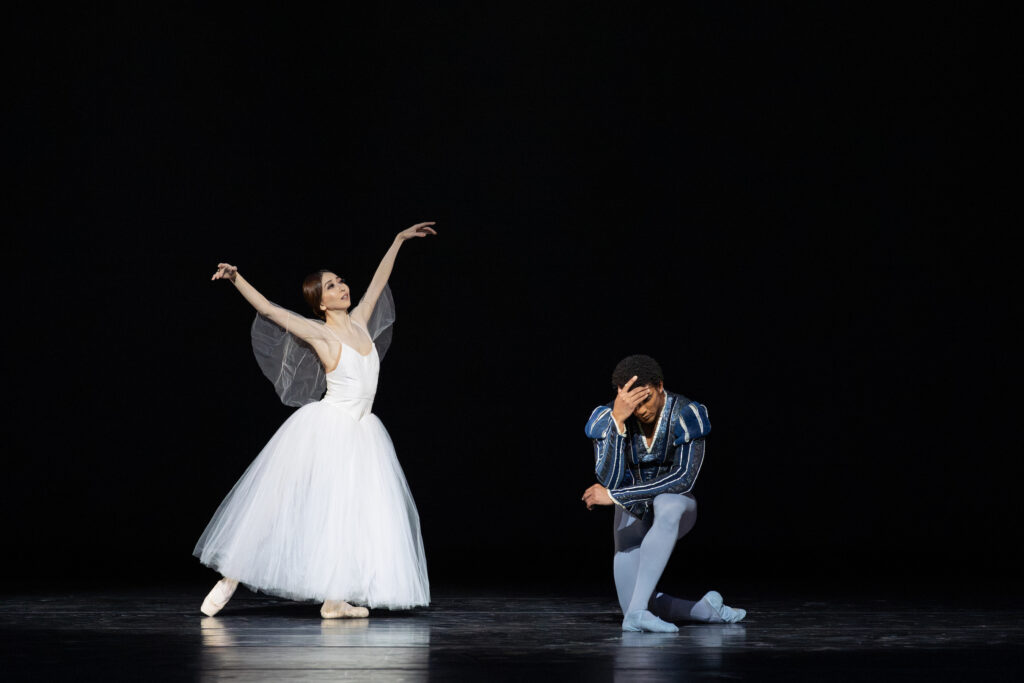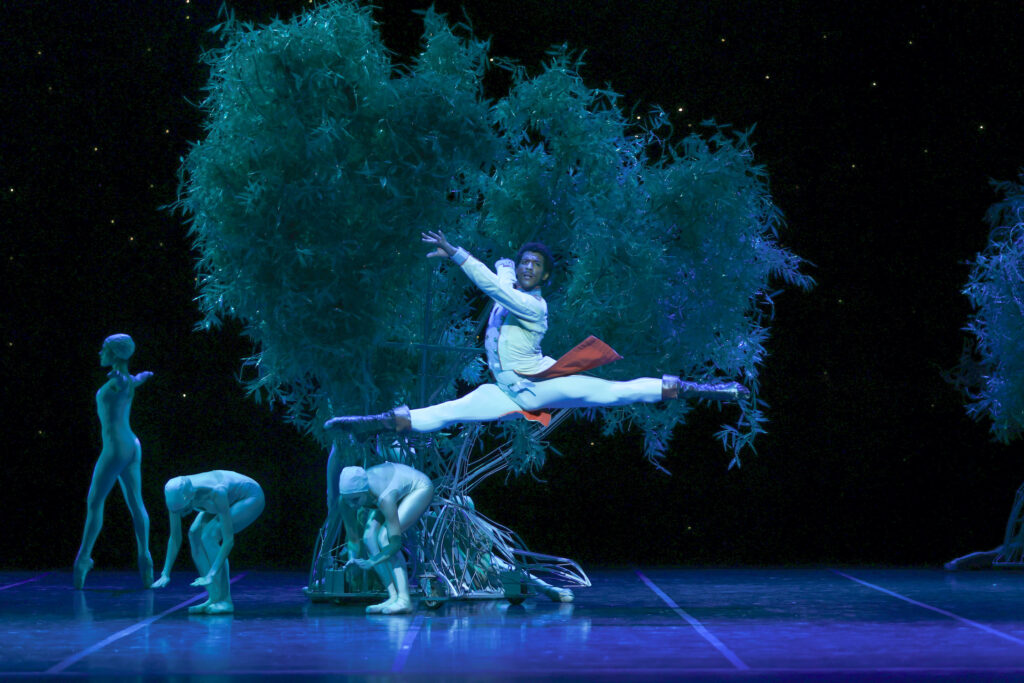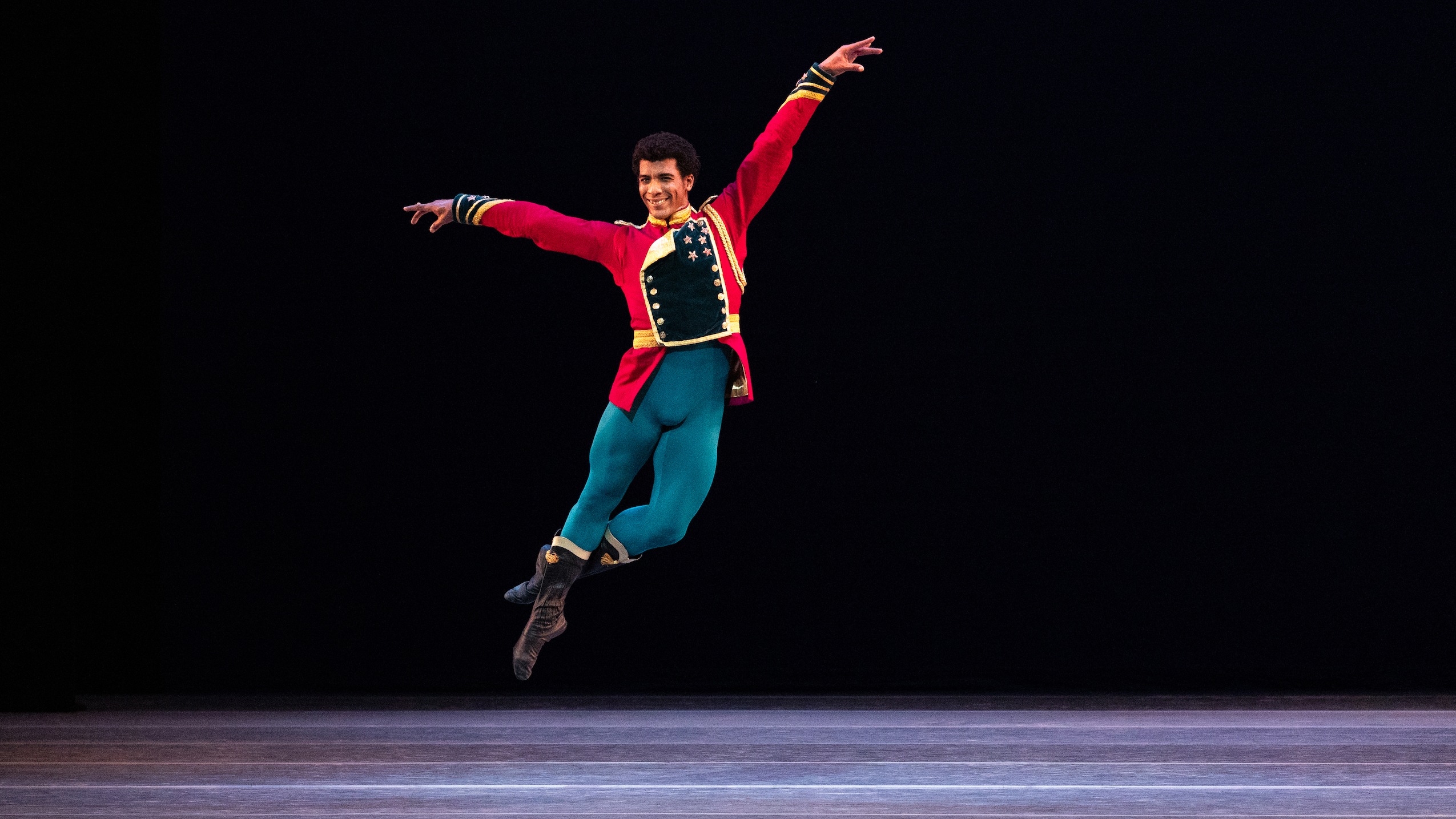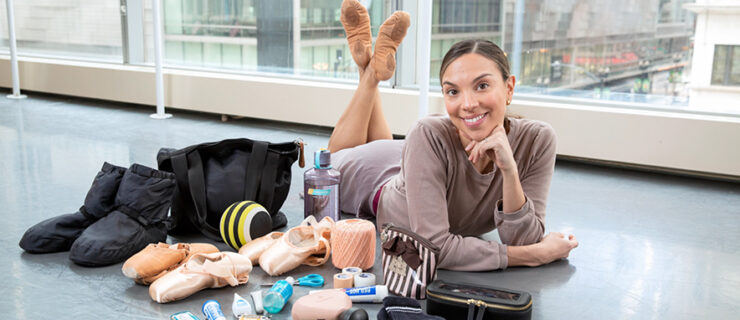Why Houston Ballet’s Gian Carlo Perez Lives for the Stage
Originally from Cuba, Gian Carlo Perez joined Houston Ballet this season as a first soloist after a long career at The Washington Ballet. And he is already making his mark in ballets like Stars and Stripes, A Midsummer Night’s Dream, The Nutcracker, and more. Below he talks about his childhood idol, his pre-performance routine, and why discipline and consistency matter more than talent.
Give us a brief history of your early progression as a dancer.
I come from a family of artists. My parents sent me to the national ballet school in Havana, where I studied for eight years. I had great teachers—they developed my artistry and partnering so well. Out of 24 boys, I was the only one given the opportunity to join Ballet Nacional de Cuba. In 2014, I went to the USA International Ballet Competition in Jackson, Mississippi, and Septime Webre [then The Washington Ballet’s artistic director] came looking for dancers. I didn’t speak any English, I didn’t know what he was saying, but he told me, “Hey, I have an audition today—do you want to come to my class?” As soon as I took the class, he offered me a contract.
What was the adjustment like?
It was a huge journey—a lot of learning. In Cuba, we were more focused in classical ballet, but in America I had to be able to do Forsythe, Kylián, Duato, all these neoclassical choreographers. I was really excited, but challenged at the same time. It made me fall in love with dancing in America.

And now you’re at Houston Ballet. How has that been?
I joined this season—it’s a huge company, huge building, with so many new works. It’s super-fulfilling—the whole history of this place is incredible. Carlos Acosta, my biggest idol, was a principal dancer here. I got to see him dance in Cuba when he was still with Houston Ballet. And now I’m dancing in the same company where he was a superstar. I feel really humbled.
Which do you enjoy more—telling stories or neoclassical works with no storyline?
Classical ballet is a language that’s been spoken for many years, and I went to school for it, so I can speak the language. I feel confident and can refer myself better to that. There’s character development, there’s an arc—acting, mime, partnering, solos—a whole spectrum. When you do a neoclassical work, it’s 15 or 30 minutes of dancing one way. It’s great as well, but I’d rather have the two-hour course where I can really develop and become this character.
To whom would you attribute your success?
My grandma. She would say “You dance like a prince!” every single day before I’d go to school, or after a performance. I don’t know what she saw, but whatever she imagined I’m always trying to replicate.
For everything about being an artist and a ballet dancer, it’s Victor Barbee and Julie Kent. They have been incredible mentors. Julie molded me. She taught me how to look good without trying so hard. Victor was like, “You don’t have to be 200 percent constantly—you can be 100 percent and still look good.” I trust their view and what they’ve done for me. They’re why I’m here.
What do you enjoy more: performing onstage or working in the studio?
I love the stage. Period. Whatever happened in the studio, you’re never going to be able to share it with many people—you can be your best, but it’s just for you. We are artists; we are meant for sharing. When I get to the stage, I feel like I’m my strongest, even if it’s not my best performance. As for the process in the studio, I love it when your coaches develop you as a dancer. Fortunately, I’ve had that my entire career—all these individuals who put passion into my work. We laugh, we cry, and when that process is kind of human, it feels good. But it’s always for the stage.
What qualities do you admire most in other dancers?
I really respect when dancers are able to keep themselves healthy through a whole season, which is difficult when you work a lot. It’s about how you approach dancing—it’s not kicking, kicking, kicking, but it’s “I do a temps lié, I use my plié. Maybe today I take it easy.” It’s those extras, the small details, that make the whole picture bigger.

What advice would you have for students wanting to be professional dancers?
Be disciplined. It will get you farther than you think. You can have great talent, but if you’re not consistent about putting in the work and you don’t have discipline, the talent goes away because you always rely on the easy way. Stay accountable, and respect whoever is in the front of the room, and follow the direction in the most positive way—they want the best for you.
What’s your favorite thing to cook?
I am a big cook, that’s what I do! I love my fried rice, I love my roast pork, I also like to bake. I do everything in the kitchen—my own sauce, my own infusions, pastas. Seafood is my strongest right now, although my mom says that chicken curry is my good one. I go home, I open my fridge, and I pull out random stuff to make food out of—it’s the most satisfying and best thing when you sit down to it.
Do you have a pre-performance routine?
It’s about mindset—you have to be so strong of mind to not be afraid of being out there. I always cross myself and say, right before I go to the stage, “Everything is good with me. I’m doing great. I’m really happy that I’m here and I’m doing this right now. Let’s do it.” I’ve said these words since I was 14, and it has worked for me—it brings me peace. Then I smile and I just go!






